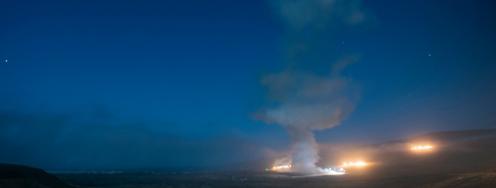IAEA Iran Report: Steady Production, Expanding Capacity
On the radar: Update on Iran’s enrichment program; Talks in Kazakhstan; US & Russian perspectives on reductions; Trimming bloated nuclear budgets; Hagel confirmation; and Kim Jong-un, commercial star.
On the radar: Update on Iran’s enrichment program; Talks in Kazakhstan; US & Russian perspectives on reductions; Trimming bloated nuclear budgets; Hagel confirmation; and Kim Jong-un, commercial star.
February 22, 2013 | Edited by Benjamin Loehrke and Alyssa Demus
Topline IAEA numbers - 167 kg (367 lbs) net stockpile of 20% enriched uranium; increase of about 18-19 kg since November report; 2,255 more centrifuges installed at Natanz (180 of them are IR-2m centrifuges).
ISIS Analysis - Key findings: Number of installed centrifuges at Natanz increases substantially; IR-2m centrifuges installed but not yet enriching at Natanz; Number of cascades producing near 20% is constant; does not have enough 20 percent low enriched uranium for one weapon (if enriched to weapons-grade).
--Iran continues to deny access to Parchin; no progress on talks to resolve questions about the military elements of Iran’s nuclear program. Full ISIS analysis from David Albright et al. (pdf) http://owl.li/hX5YG
IAEA report - “Implementation of the NPT Safeguards and relevant provisions of the Security Council resolutions in the Islamic Republic of Iran,” here. (pdf) http://owl.li/hX6gR
Implications - “The IAEA largely confirms what the media has already reported.” It does “not suggest that a nuclear-armed Iran is either imminent or inevitable,” writes Laicie Heeley. “The time for a diplomatic resolution has not yet expired, but the window of opportunity is getting smaller. The goal of the upcoming talks in Kazakhstan should be to put time back on the clock.” Full analysis at Nukes of Hazard. http://owl.li/hXcjf
How it played - “Iran move to speed up nuclear program troubles West,” by Fredrik Dahl at Reuters. http://owl.li/hXzbi
Welcome to Early Warning - Subscribe to our morning email or follow us on twitter.
--Have a tip or feedback for the editor? Email earlywarning@ploughshares.org earlywarning@ploughshares.org. Want to support this work? Click here.
Nuclear legacy - Recent administration activities suggest the president is making “a serious attempt to realise the commitment he made in Prague four years ago when he promised to take concrete steps towards a world without nuclear weapons,” writes The Economist.
--Policy outlook: “The president is wary of trying to get another treaty through the Senate, so he is contemplating both accelerating the New START reductions and, if agreement can be secured with Russia, moving below the ceiling, perhaps to 1,000 warheads—a figure that the joint chiefs of staff have recently agreed would not put deterrence at any risk.” http://owl.li/hXk6c
The Muscovite perspective- “Obama's nuclear bid, to be successful, requires an updated and comprehensive look at Russia,” Dimitri Trenin says in his assessment of future nuclear reductions from a Russian perspective.
--”If [the U.S.] wants further cuts in nuclear weapons, [it] will need to credibly assure the Russians that U.S. missile defense deployments, while effective against third countries (i.e., Iran), will not diminish Moscow's deterrence power. Washington will also need, when discussing tactical nuclear weapons, to include non-nuclear systems with a capability for precise strikes,” writes Trenin in Foreign Policy. http://owl.li/hXt84
Tweet - @wellerstein: Newsweek discusses the Tsar Bomba, October 1961. Per usual, lower Manhattan is the way these things get explained. http://owl.li/hX4pA
Smart savings - “Substantial sums” of money can be saved by pursuing nuclear reductions, says Michael O’Hanlon of the Brookings Institution. Even without a new agreement and further arms control, O’Hanlon has identified additional ways for the U.S. to save big bucks on its nuclear weapons budget.
-- Recommendations: Scale back on subs and ICBMs with bomber fleet as a hedge; cut back on DOE’s nuclear weapons assets including labs; halve the B61 bomb refurbishment effort; and reduce spending on missile defense. Full report here. http://owl.li/hXnu3
Atomic austerity - “Our government plans to spend approximately $640 billion on nuclear weapons and related programs over the next decade. In an age of fiscal austerity, scarce dollars must address real threats like cyber-attack and terrorism, not programs with diminishing strategic relevance. Reducing the size of the arsenal makes both strategic and fiscal sense,” argues Kingston Reif of the Center for Arms Control & Non-proliferation in The Baltimore Sun. http://owl.li/hXlmW
Obama’s team, one player short - “Each day that we do not have a secretary of defense is one day less that the president has to [prevent] an Iranian nuclear bomb. [...] Time is ticking away under a cloud of uncertainty. It’s time to end this uncertainty [...] and to get our country’s national security team — especially his choice for secretary of defense — in place,” writes Joel Rubin in The Jewish Chronicle. http://owl.li/hXf1S
Events:
--”Iran Nuclear Talks - What Can Be Achieved in 2013,” Featuring Amb. Thomas Pickering, Seyed Hossein Mousavian, Alireza Nader and Daryl Kimball. February 25 2:00-3:30 pm at the Carnegie Endowment. http://bit.ly/XK3XYV
--”After North Korea and Iran: How Much More Say Should Congress Have on U.S. Nuclear Exports?” Jay Solomon, Jack Spencer, Jodi Lieberman and Don MacDonald. February 25 11:45 a.m.-1:30 p.m. @ Rayburn House Office Building. RSVP here. http://owl.li/hQKOK
--”The ROK-U.S. Alliance in the Pacific Era In Light of North Korea’s Recent Nuclear Test.” Choi Young-jin, South Korean Ambassador. February 27 6:00-8:00 p.m. @ George Washington University, Jack Morton Auditorium. RSVP here. http://owl.li/hVcph
Dessert:
Kim Gangnams - A new Chinese web browser commercial features a Kim Jong-un look-alike using a laptop, dancing. Video posted at Brand Channel. http://owl.li/hXtPF



